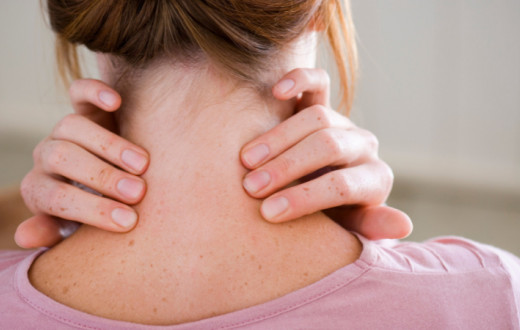
If it seems like your teen is experiencing more and more anxiety, you’re not alone. The National Institute of Mental Health says 25% of 13 to 18-year-olds have an anxiety disorder. Just under 6% have a severe anxiety disorder. This is not counting the teens who suffer from anxiety but don’t have a disorder.
Our teens are experiencing a legitimate mental health crisis. However, there is relief in sight. We are here to help you and your teen find a calmer life!
Topics covered:
- Stress vs. Anxiety
- What's causing the rise in teenagers with severe anxiety?
- What are the symptoms of anxiety in teenagers?
- Anxiety myths busted
- Tips for helping your teen overcome anxiety
- How to help a child having a panic attack
- Anxiety management techniques
- Related articles
Stress vs. Anxiety
Stress and anxiety often get lumped together, and for good reason. Without stress, there is no anxiety. And while stress isn’t avoidable, anxiety is. Managing stress is literally helping to prevent anxiety. But if you or your teen are already experiencing anxiety, managing stress can still help reduce anxiety.
You might also like to read Comprehensive Guide: 25 Effective Strategies to Reduce Stress
What's causing the rise in teenagers with severe anxiety?

A common question that comes up is— is it normal for teens to experience severe or chronic anxiety? With the recent and significant rise in teenage anxiety, this question is looking for what is normal, aka acceptable. Let’s be clear: it isn’t normal for teens to experience severe or chronic anxiety. However, these days, it is unfortunately common. This is not the normal teenage anxiety most of us grew up with. And the answer to what’s causing the rise in anxiety in teens isn’t simple. Here are some of the factors that could be contributing to your teen’s anxiety levels.
Diet
The Standard American Diet (SAD) is the dietary pattern the majority of Americans follow. It's packed with processed foods, fast foods, added sugars, and sodium. Wholesome foods such as fruits, veggies, whole grains, legumes, nuts, and seeds are largely forgotten. When it comes to the diets of teens, this is exponentially true. However, when growing up with a dietary deficit, teens are set up for many problems. These include an inability to handle stress.
The old adage, You are what you eat, is now also, What you eat is how you feel. A healthy diet can reduce anxiety symptoms and support your teen’s mental health.
Technology
Technology has its positives and negatives. However, it can be hard to tell if the scale tips more toward the positive side. This is especially true when there is a direct link between technology and health in general.
Overuse of tech has led to less time with people and nature. It has also caused a lack of social skills, weight gain, and a lack of vitality. It is also addictive. If the technology has a screen, exposure to blue light can damage your vision and insomnia. Let’s not forget that technology has and will continue to create job insecurity for many. Even if the positives outnumber the negatives, the negatives are hard to deal with.
Social media

It is kinda humorous that social media has the word social in it. Too often, social media doesn’t provide the kind of social connections humans need. As with technology, social media has challenges. This is especially true when it comes to teens.
According to the Mayo Clinic, social media may help some teens at certain times but may have negative impacts at other times. They suggest that social media’s impact during teenage years is based on how it is used and outlines healthy benefits and unhealthy effects.
Healthy benefits
Unhealthy effects
Recreational drugs
Society’s perspective on recreational drugs has been shifting in recent years. One can argue the differences between them and alcohol. But, using drugs and alcohol can raise anxiety. This is especially true when there is already stress and anxiety.
What are the symptoms of anxiety in teenagers?

Physical symptoms of anxiety
- Sleep problems
- Chronic health issues
- Rapid heartbeat
- Tension headaches
Mental symptoms of anxiety
- Continued irritability
- Difficulty concentrating
- Greater sensitivity to other’s opinions
- Isolation and loneliness
- Fearful or worried about everyday life
- Needs constant reassurance
- Extremely self-conscious
- Overthinking
Anxiety myths busted

Myth: People need medication to manage their anxiety
Not all anxiety is a prescription for medication. There are many tools for preventing and managing anxiety. With that said, consulting with your mental health professional is essential when anxiety is not manageable.
Myth: Children and teens don't have anxiety; they're just looking for attention
Children and teens do have anxiety! And it may not be just one factor contributing to their anxiety. This myth is simply incorrect. And if young people are really looking for attention, there is an issue that needs your attention.
Myth: Anxiety isn't treatable
Anxiety may be the most common mental health disorder. However, no one has to live with anxiety. While what works for one person to cope with anxiety may not be as helpful for another, there are many things that treat anxiety. From deep breathing and meditation to therapy and medication, everyone can find relief from anxiety.
Tips for helping your teen overcome anxiety

Encourage healthy social media use
This tip is a tricky one. Social media is addictive, no doubt. Healthy social media use can sometimes appear to be too restrictive for an addict. Gradually reducing social media use might be easier for your teen. Setting goals and giving rewards might also work better than the framing that restrictions give. Just don’t give up; keep encouraging healthy social media use. Watch this short video, The Effects of Social Media Teens’ Mental Health, with your teenager.
Be a positive role model for your child
Your children notice everything you do and don’t do, even when you think they are not paying attention. You’re a 24/7 walking, talking, sleeping, and everything else role model. If you think you are spending too much time on your phone, many of us do, make a pact with your teen to reduce your screen time together. Make it a fun self-care challenge by adding a special reward for the two of you to share.
Talk to your child about their worries
The first line of defense when it comes to your child’s anxiety is your relationship with them. Creating a space where you can ask your child about their feelings will help. They need to feel comfortable coming to you to voice their concerns. This will help you assess the severity of their anxiety. Then, you can take the next steps to help them feel better.
Respond to their anxiety in the right way
This, too, is a tricky tip. What works for one teen may not work for another. However, there are a few things you can do that are universally helpful.
Don’t judge them or otherwise make them feel bad about their anxious feelings.
Listen patiently.
Ask them what might help them feel better. This doesn’t mean you do what they ask or do not take any other actions you think are necessary. By asking them this question, you will help bring their anxiety down a little and reveal a clue on how to move forward.
Don’t hesitate to get the support of a mental health professional if you are not sure how to respond to your teen’s anxiety.
How to help a child having a panic attack

Panic is a sudden, uncontrollable fear or anxiety often affecting one’s behavior due to the inability to think clearly. Whereas anxiety can leave one frozen and unable to take action, panic takes anxiety to a level of urgency and can lead to actions with negative repercussions.
A teen experiencing a panic attack needs immediate help. Here are three things you can do to help your child or teen during panic attacks.
The 3 3 3 Rule—Have them name three things they can see and three things they can hear, and move three body parts. Think of this rule as a way of misdirecting their thoughts and causing a moment of panic.
The 5 5 5 Rule—This rule allows you to ask them to breathe with you without giving any other instructions. While you breathe in deeply for five seconds, hold your breath for five seconds, and slowly breathe out for five seconds, they will naturally start to follow your lead. Connecting the breath and the emotions helps to calm quickly.
Straw breath—This simple deep breathing exercise is highly effective in increasing calm and lowering blood pressure, though it is not a substitute for blood pressure medication. This technique works best when the panic participant has already learned straw breathing.
- With eyes open or closed, take a long, deep breath through the nose.
- Slowly exhale through the mouth with pursed lips as if there is an invisible straw in the mouth. The slower, the better. Continue straw breathing until calm.
- For even more calm, straw breath can be practiced by coordinating the breath with your attention or light focus. With your eyes closed, you breathe in. Your attention starts at the feet and travels up through the body to the top of the head as you continue to inhale. Then, as you slowly exhale, let your attention gently drift down back to the feet. Repeat for as long as needed.
You might also like to read How to Calm Anxiety with The Power of Your Breath.
Anxiety management techniques
Relaxation techniques like those listed above are good coping strategies when teens have anxious feelings. However, if you want to make a significant difference in young people's mental health, have them learn SKY Breath Meditation. SKY is an evidence-based practice that gives many mental health benefits, including:
- 60% reduction in stress hormones
- Significant decrease in clinical/non-clinical anxiety
- Significant decrease in clinical/non-clinical depression
- Reduced post-traumatic stress disorder symptoms
- Reduced addictive behaviors
- Enhanced deep sleep
- Increased self-esteem
- Increased optimism
- Greater mental focus
- And more…
The SKY Breath Meditation technique is taught through the following programs:
Related articles
How to Cope With Tragedies: 5 Soothing Methods
What is Stress Fatigue? Managing Emotional Exhaustion
The Top 15 Yoga Poses for Stress Relief: How They Can Help You Relax
Cortisol: The Good, The Bad, And The Ugly
Overcoming Social Anxiety: A Story About Breathing Meditation
Travel Anxiety: Breathe Your Way to Calm On the Fly
Sunday Scaries: Tips to Overcome The Dreaded Return to Work
Meditation For Stress Relief To Help You Get Your Glow Back
How to Relax Like You’re On Vacation Even When You’re Not
I Hate People: Why You Feel This Way and How Meditation Can Help
How To Be More Empathetic: Unleash The Power of Your Breath
11 Stress Relief Quotes For When Life is Stressing You All the Way Out
Disclaimer: This content on the Art of Living Blog is not intended to be a substitute for professional medical advice, diagnosis or treatment. Always seek the advice of your physician or other qualified health providers with any questions you may have regarding a medical condition. Any links to third-party websites are provided as a convenience only and the Art of Living Blog is not responsible for their content.




























